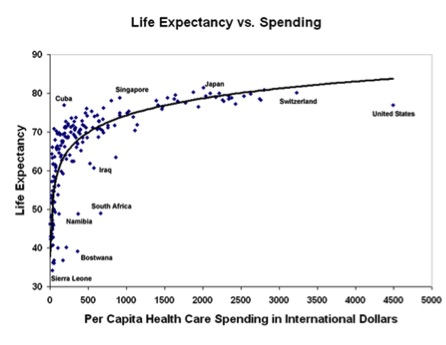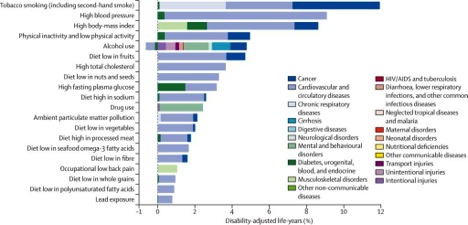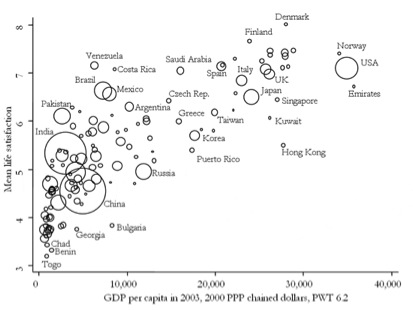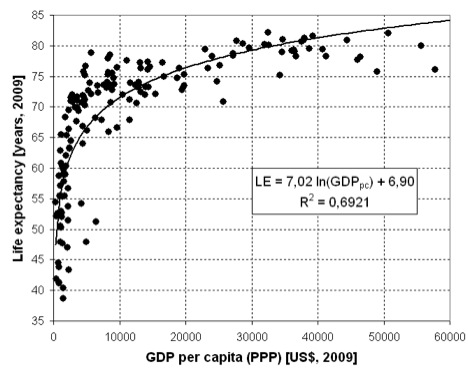Archive for March, 2013
Who is Tracking You?
In previous posts I have ruminated on topics like metrics, big data, and decision-support. How far will this go? One thing that strikes me is just how much we are all being “tracked” and who is doing the tracking. By tracked I mean the passive (and sometimes active) collection of data related to where you are, what you are doing and who you might be doing it with. The data does not have to be specific and might for example be something like person X ate lunch at restaurant Y on a given date at a given time. The specifics of what you ate might not be part of this tracking but the general pattern of what you did is being tracked. Mix and match a few databases and a pretty granular picture of your daily life emerges.
How Big is Your Electronic Footprint?
Stop for minute and think about how often check in electronically. How many footprints or electronic crumbs do you leave; and how easy would it be to “reconstruct” your life?
- When, where and what you do can be tracked every time you use a computer.
- When and where you use your cell-phone can be tracked as well as who you call.
- Every sort of electronic transaction from using your “parking card” to routine credit card transactions can be tracked.
- Every time you swipe something it is being recorded.
- In some places facial recognition programs and closed circuit video monitoring are increasingly being added to the mix.
- Plenty of us also divulge and confess to all sorts of things voluntarily on social media via the process and cultural phenomenon of Oprahization.
Think again about how hard it would be to live an electronically invisible life? Essentially it would be a non-electronic, all cash life. While it might be possible have a minimal electronic footprint in a very local way, how about making a plane or hotel reservation? Who really wants to live without a cell phone? A lot of life today has obligatory electronic component and anything electronic can and probably is being recorded and tracked.
The Tracking of Malte Spitz
Below is to a TED talk by the German politician Malte Spitz whose movements were tracked by his cell phone company for 6 months. Here is a link to a longer article on this incident and also an interactive map of where exactly Mr. Spitz was over the time period he was tracked. Why was this done? Who approved it and why was he targeted? Or did he just sort of get on a list and it was off to the automated data collection races? To me the potential mindless elements of this, where no one is responsible and it is all merely a matter of “policy” is perhaps the scariest part.
click here for video
Tracking vs. Innovation
All of this tracking might lead to so-called innovations like making “electronic prisons” for certain offenders. Is this a real innovation or merely a way to do things more efficiently at lower costs? On a larger note are tracking, metrics, and decision support the pathway to innovation or merely the pathway to efficiency? Is the real solution to crime prevention fixing the social conditions that seem to breed it, or is the solution simply more and better ways to incarcerate people?
The Minority Report is Prophetic
In the novel the “The Minority Report” by Phillip K. Dick a future society exists where crime can be predicted and prevented using techniques that are similar to those discussed above. Such techniques are already being developed and perfected to predict consumer behavior and who knows what else.
The Electronic World: Another “Tool” or Something Different?
The electronic world has many, many positives that do in fact make things more efficient and easier. As a tool (or set of tools) it allows us access to information and insights that used to be in hard copy only in a few places like University libraries. Complex scientific and engineering problems can be solved quickly. It is politically powerful as shown by the efforts of authoritarian governments to tightly control internet access and social media to suppress dissent. However, like most tools the electronic world is changing how we live and challenging assumptions about life as we mindlessly get more and more addicted to it. I am not arguing for the good old days, just asking how routine we want the voluntary, passive, and active invasion of our privacy to become. Every wave of technology has intended and unintended consequences and in the long run we spend a lot of time and energy as a species dealing with the unintended consequences of our technical innovations (suburbia and urban sprawl came with cars for example). Are the changes coming with the electronic world just another cycle of technical change and unintended consequences? Or, are we moving from humans the tool makers and users who manipulate the environment to a world where the tools are manipulating us?
Aging & the Other Bernard
Last month there was a lot of hullabaloo when 38 year old Bernard Lagat ran a very fast 2-mile (8:09) indoors at the Millrose games in New York City. On March 9th 48 year old Bernard Hopkins won the IBF light heavy weight boxing title. Hopkins has a “grew up hard” story that is typical of many fighters and some would say boxing is not what it used to be. However, I can only think of one athlete, the cyclist Jeannie Longo, who did as well as Hopkins has in their later 40s in a sport that requires a champion be in truly superior physical condition. Unfortunately at least the end of Longo’s career has been tainted by all too familiar evidence of performance enhancing drug use in cycling.
The golfers Jack Nicklaus won the Master’s at age 46, Julius Boros won the PGA at age 48, and Tom Watson (incredibly) tied for second at the British open at age 59. The pitcher Jamie Moyer played major league baseball at a high but not dominant level into his middle 40s and won a game at age 50 (he was outstanding in his early 40s). Martina Navratilova played in the mixed doubles competition at Wimbledon in her late 40s. Hockey fans know about Gordie Howe who played well in the NHL at age 52, and hockey unlike golf is a test of conditioning.
Is there anyone Bernard Hopkins compares too? The short answer is Archie Moore (1916?-98), who like Hopkins was a boxer with a troubled past and fought long, hard and incredibly well into his late 40s and held a world title at around age 46. Moore was self-educated, an icon in the civil rights movement, and became something of a renaissance man/humanitarian. Here is a link to an extended interview with Moore from the early 70s that aired on the Public TV interview show “Day at Night”. Moore defies the stereotype of the inarticulate boxer who says little and thinks less.
When we think about those who beat the clock during middle age we tend to focus on endurance athletes or those in skill sports and not about boxing where some of the most notable examples come from. Any middle aged champion has to overcome all sorts of odds and obstacles, but the boxer also has to confront what must the incredible fear of entering the ring and actually having to fight his way out. Boxing is nuts and maybe it should be banned as an archaic, brutal and frequently corrupt spectacle. However, never doubt the courage, heart and (incredibly) the intelligence of some of these men. Anyone who does should read Shadow Box by George Plimpton who said:
“Shadow Box is the best of my works because it gave me a chance to enter a very strange, but likeable and interesting fraternity; that of the boxing world.”
Health vs. Health Care Spending
A few weeks ago I showed a couple of graphs on the relationships between income, happiness and life expectancy. The graphs demonstrated what can be described as a diminishing returns relationship with more and more resources required to generate even modest improvements in either happiness or life expectancy with an eventual flattening of the relationships. A similar trend exists for health care spending per person and life expectancy across the world.
Is the U.S. Underperforming?
A quick look at the graph above clearly suggests that the U.S. health care “system” is underperforming. But before anyone jumps to that conclusion it is important to ask what the health care system has to do with broad based measures of public health like life expectancy? The next graph is a summary by the King’s Fund in the UK from three studies that have addressed this topic. The point is that in two of the three studies traditional health care is a minor (15-25%) determinant of health. My personal take based on a lot thinking and reading on this topic is that the Mc Ginness 2002 breakdown (15%) is probably the most accurate of the three. In this context, most of the life expectancy problem in the U.S. is about health behaviors and social circumstance as opposed to the health care system. That having been said, there are plenty of ways to look at what is wrong with the U.S. health care system like uneven access to care, uncoordinated care, excess use of technology and high costs; but life expectancy per se is probably not a good metric.
Will a “Better” Health Care System Fix the Problem?
In the UK significant resources have been devoted to developing and improving access to health care and coordinating this care via the National Health Service (NHS). There has also been an effort to make sure that only evidence based treatments are used and that technology is appropriately deployed. While the fraction of the GDP spent on health care is much lower in the UK than in the US, costs have gone up dramatically in the past decade or two. Has this worked? The UK lags behind most of the EU15+ countries (the original 15 members of the EU, Australia, Canada, the USA, and Norway) in many indices of health in spite of the efforts of the NHS. The graph below shows that most of the problem is related to life style and things like smoking, drinking, diet and exercise. Again, things that are relatively independent of the health care system.
Life Expectancy and Women in the U.S.
In general life expectancy for women is a few years higher than for men. However, recent evidence suggests that life expectancy for less educated and poorer women is actually falling. This fall in life expectancy highlights the limits of health or medical care on public health and reinforces that it is all (or at least mostly) about choices, lifestyle and social circumstances.
Summary
The point of this post has been to try to dissociate some of the criticism of the U.S. health care system from these broad based markers of public health. There is plenty wrong with health care in the U.S., but the real problems for the population as a whole are driven by a combination of personal choices and social forces that dwarf both the many negatives associated with our fragmented health care system.
March Madness Strikes Human Limits
At the suggestion of Dr. Jason Carter from Michigan Tech we are going to have a Human Limits NCAA pool. (password = humanlimits) Please fill out your brackets by noon on Thursday, March 21st.
As you may recall, Jason did a guest post on Dream Team 1 vs 2 last summer during the Olympics. The winner of the pool will get their very own Rochester Free PE T-shirt! So we are mixing and matching Human Limits and Rochester Phys Ed which seems like an especially good thing given the roots of RPE in the basketball hotbed of Lawrence, Kansas.
The World Until Yesterday: A Book Review
I have just finished reading “The World Until Yesterday” by Jared Diamond. It is a good book and I recommend it. Diamond is a controversial “public” scientist and educator who is into big ideas about the forces that have shaped what might be described as human culture and ecology. His best known book “Guns Germs and Steel” discusses how and why Eurasian civilizations (especially those in with roots in the Middle East and Mediterranean) have become so dominant over the last 10,000 thousand years. Diamond argues that a number of geographic factors led to the development and diffusion of agriculture and technology that were then amplified over time as advances in one area led to advances in other fields. Guns, germs and steel, in one notable example, then explains how hundreds of Spanish soldiers could conquer the Aztec and Inca empires in the 1500s through a combination of better technology (guns, steel, horses), and disease resistance (germs) that all had their roots in who lived where and how vs. genetic or cultural superiority per se.
Lessons From the Past
In “The World Until Yesterday” Diamond discusses how humans lived before the advent of things like modern agriculture, writing, and industrialization. He uses examples from remaining elementary “tribes” and asks a number of overarching questions about how the structure of society and modernity influence things like child rearing, dispute resolution, how we deal with dangerous situations, aging, and what diseases we get. The general idea is that while that life is very uncertain, violent and dangerous for those living in elementary tribal societies; these societies offer a number of positive examples that we in the modern world can learn from.
Over Parenting is Modern
One example I found especially relevant as a parent and teacher is the independence that these societies give children. In my professional life in medical research, I deal with young adult academic elites who range in age from about 16 (High School honors students) to their 20s (medical students, graduate students and just finished M.Ds. and Ph.Ds.). By far the biggest issue I deal with is fall out from lifelong “over parenting”. Many of the super bright struggle with even a hint of set back or failure, and they get involved in a lot of psychic churn over what seem like pretty minor issues (for example getting a B) or decisions. I would say the biggest thing I do for the “trainees” under my supervision is give them a chance to decide for themselves, “fail” intellectually, and then perhaps learn to bounce back with a new idea or experiment. I would also say that many of my most successful students have been a bit rebellious and had experience with “failure” and responsibility through things like athletics and the performing arts. Situations where there are no do-overs.
Criticism of Diamond
Several of the links so far include pretty detailed criticisms of both Diamond’s ideas and the depth of his scholarship on the topics he tackles. For example, people say he cherry picks data and examples that support his pre-conceived world view and then generates compelling but incomplete narratives. At some level this is a pretty stock criticism of focused experts when they disagree with generalists trying to cut across intellectual boundaries. In other words biologists, anthropologists, historians, sociologists, and economists might have differing explanations for a given set of observations. In an area I know something about, blood pressure; he discusses the link between dietary sodium and high blood pressure in the modern world (both are typically very low in the elementary cultures). Diamond does a good job explaining the standard teaching on the topic but misses a number of other ideas (my own included). However, how realistic is it to ask him to take a deep dive into the nuances and debates of every issue? In this context, I am perfectly willing to cut him some slack and not get too territorial as I read what he writes.
Read This Book: More vs. Less Big Picture Thinking!
As I just mentioned, I am more than willing to cut Jared Diamond some slack and his efforts to raise, synthesize and comment on big issues that affect us all. The bigger issue is not that he might be “wrong” in selected areas, but the general lack of big ideas and big thinking that we are exposed to. We live in a fragmented world with all sorts of data, less information and even less insight. Anyone attempting to communicate insights and big ideas about how the world might work to a general audience deserves our applause. “The World Until Yesterday” is an excellent read.
Happiness vs Stuff
Today’s post is about happiness. It was stimulated by an excellent piece of personal history in the New York Times by a guy who had hit it big as an entrepreneur, embarked on a life of conspicuous consumption and then realized he was a prisoner of all of his stuff. He subsequently downsized in a radical way and finds his less cluttered life much less stressful and much more rewarding. This whole topic of how to measure happiness and how it relates to material wealth has been the subject of discussion in places as diverse as the happily capitalist Forbes Magazine and also the liberal group Oxfam.
Income vs. Satisfaction
Obviously individual stories vary, but the graph below is from the Gallup Organization and plots income per person vs. life satisfaction. The graph tells two stories. The first is that people in poor countries generally rate their lives as less satisfying than people in rich countries. The second story is that after per person income reaches 10-15,000$ per year money (and by extension accumulation of material goods) has less impact on happiness.
Income vs. Life Expectancy
The money vs. happiness graph above is almost identical to the money vs. life expectancy graph below which was generated from data obtained from the World Bank and CIA. Again, life expectancy goes up as per person income rises but things level off around 10-15,000$ per year.
A Few Reflections
All of this data and the story about the entrepreneur who simplified things reinforce the old saying that “money does not buy happiness”. The flip side is that accumulating “stuff” can buy time consuming and stressful obligations. When that happens it is pretty easy to start chasing your tail keeping up with what you have and then needing even more income to maintain it. In fact:
“…..materialists are more likely to believe that acquisition will change the kind of person they are, improve their relationships with others, enable them to have more pleasure in their lives, and enhance the effectiveness with which they carry out daily tasks. They also experience more negative emotions, such as anxiety, fear, and envy.”
On a personal note, the low tech workouts I have been doing the last few months have reminded me how easy it was to get in shape before heart rate monitors, gyms, and high tech gear of various sorts. I am also looking forward to the ice melting off the streets here in Minnesota. As soon as the ice melts I will start riding my bike to work again and get a daily reminder of the freedom I experienced when I was 8 or 9 years old and got a new bike and was able to fully explore my neighborhood so many years ago. Biking for transportation is a great way to exercise. It is even a better way to be 10 years old forever. So, enjoy all the stuff you are surrounded by but keep it in perspective by doing simple things that are their own reward.
Obesity vs Fast Food Availability
Most people who read this blog probably don’t have to be convinced about the link between eating a lot of fast food and obesity. However, I wanted to find out just how big the link is and see what else I could learn about this relationship. Here are some interesting findings.
BMI vs. Healthy Food Outlets in NYC.
The figure below is from a study in New York City on the density of healthy eating options vs. BMI. It tracked about 13,000 people and rated the density and quality of food outlets (supermarkets vs. fast food etc.) in their neighborhoods, rated them, and then divided the food ecology into quintiles (fifths). The study also corrected for things like neighborhood walkability and other factors known to influence body weight in the population. A person of average height living in the healthiest food neighborhoods (5th quintile) would weigh about 5-8 pounds less than a person living in the worst neighborhoods (1st quintile). Depending on your perspective, that might not seem like a lot but either losing or gaining just a few pounds can have marked effects on things like your blood sugar and blood pressure.
What about LA?
Los Angeles is very different than New York City. This is especially true in terms of dependence on cars and the presence or absence of convenient public transportation. So, what is the relationship between fast food restaurant density, driving and body weight in LA?
“ Car owners have higher BMIs than non-car owners; however, individuals who do not own cars and reside in areas with a high concentration of fast food outlets have higher BMIs than non-car owners who live in areas with no fast food outlets, approximately 12 lb more (p = 0.02) for an individual with a height of 5 ft. 5 in. Higher restaurant density is associated with higher BMI among local residents. The local fast food environment has a stronger association with BMI for local residents who do not have access to cars.”
Driving and Fast Food Signs.
As noted above car owners in LA have higher BMIs than non-car owners. The obvious explanation for this is that they are less physically active and that sitting in a car contributes to weight gain over time. However, we all see road signs while driving. Does the presence or absence of road signs influence body weight? A very creative study on this topic found that:
“The higher the percentage of outdoor advertisements promoting food or non-alcoholic beverages within a census tract, the greater the odds of obesity among its residents, controlling for age, race and educational status. For every 10% increase in food advertising, there was a 1.05 (95% CI 1.003 – 1.093, p<0.03) greater odds of being overweight or obese, controlling for other factors. Given these predictions, compared to an individual living in an area with no food ads, those living in areas in which 30% of ads were for food would have a 2.6% increase in the probability of being obese.”
This data adds to all sorts of information showing that “marketing works”. What we see while we drive makes a difference.
What Happens if Fast Food Outlets are Restricted?
The data above provide pretty good evidence that the type of food outlets, driving and advertising influence body weight and are contributing to the obesity epidemic (no big surprises here). However, cities can regulate how many fast food restaurants there are and where they are located via zoning and licensing. If the density of fast food restaurants were reduced what would the impact be? This is especially important because many poor neighborhoods are so-called healthy “food deserts” and obesity is an especially big problem in these areas. The interactions between income, neighborhood walkability, and the type of food outlets are complicated. However, small changes in the local food and walking ecology can make a big difference in obesity statistics and ultimately public health.
Summary
There is a lot of discussion about “soda taxes”, expect to hear more about advertising and efforts to regulate fast food outlets in the coming years as public health efforts to attack the obesity epidemic accelerate.
On The Road Again
I have been doing a lot of traveling in the last month. Some of it has been to great places to be physically active like Ft. Myers Beach, Florida, which has the best beach for running or walking I have ever been on. The beach is very long, and the tide usually comes in high enough to keep a nice flat shoulder of it firm which is perfect for running or walking. You also see plenty of pelicans dive bombing for breakfast and sometimes there are dolphins swimming close to shore.
The other places I have been were business travel. My stop wherever usually includes a stay at a nameless faceless hotel with a reasonably good work out area, but they vary. After a while though there is only so much you can do for so long in a hotel exercise room. Ten years ago when I was mostly swimming for exercise, I would obsessively find a pool to use in almost every city in the world. The “Swimmers Guide” website never failed me. Perhaps the most exotic and beautiful places I have been swimming are the salt water rock pools of Sydney, Australia. If you ever get the chance, go!
However, my obligations during business travel seem to be starting earlier in the morning and going all day. As a result, I am less inclined to go to the logistical headaches of finding a place to swim unless it is really convenient or there is a beautiful outdoor pool like the one in Coronado, California near San Diego in the area. However, while on the road I am careful about how much running I do for injury avoidance reasons and I want to make sure I do plenty of whole body training as well. Additionally, while most hotels have acceptable treadmills, the quality of the exercise bikes is pretty variable. So, what have I been doing?
Circuit Training is the Answer!
While traveling, I run either outside or on the treadmill for 30-40 minutes every other day. If there is a reasonable exercise bike in the hotel sometimes I do 30 minutes of cycling followed by 20-30 minutes of running. I use the timer on my watch to do things like one minute jog, one minute fast to break things up and keep my exercise intensity high. On the alternate days I have been doing cycling or jogging for a few minutes interspersed with whole body calisthenics and weights. Here is a sample circuit work out from a few days ago.
- 5 minutes of easy cycling
- 20 burpees followed by leg-raises/crunches followed by dumbbell curls and rows
- 2 min cycling
- 40 stair climbers followed by planks followed by push-ups.
- 2 min cycling
I then repeated this for 40 minutes of total exercise with 5 minutes of easy cycling for a cool down. When I am outside the cycling is replaced jogging. I also vary the combination of exercises I do and as this type of session goes on I am lucky to be able to do 10-12 burpees or 30 stair climbers. If there is a lat pull machine or a place to do pull ups or bar dips I work those into the routine as well.
So far this has worked well, is convenient and a great way to start your day while on the road. I have noticed that when I get home and into the pool or on the bike I have not lost much and am ready to go right away. This has also been a chance to vary things and be creative. I am thinking about adding jump-roping to the routine in place of the jogging or cycling, and I have seen other folks use medicine balls and sand bags with their calisthenics at some of the better hotel exercise rooms.
Summary: There are plenty of low-tech solutions to the challenge of exercise while on the road or really the challenge of exercise anywhere. Find one that works for you!
You are currently browsing the Human Limits blog archives for March, 2013.









